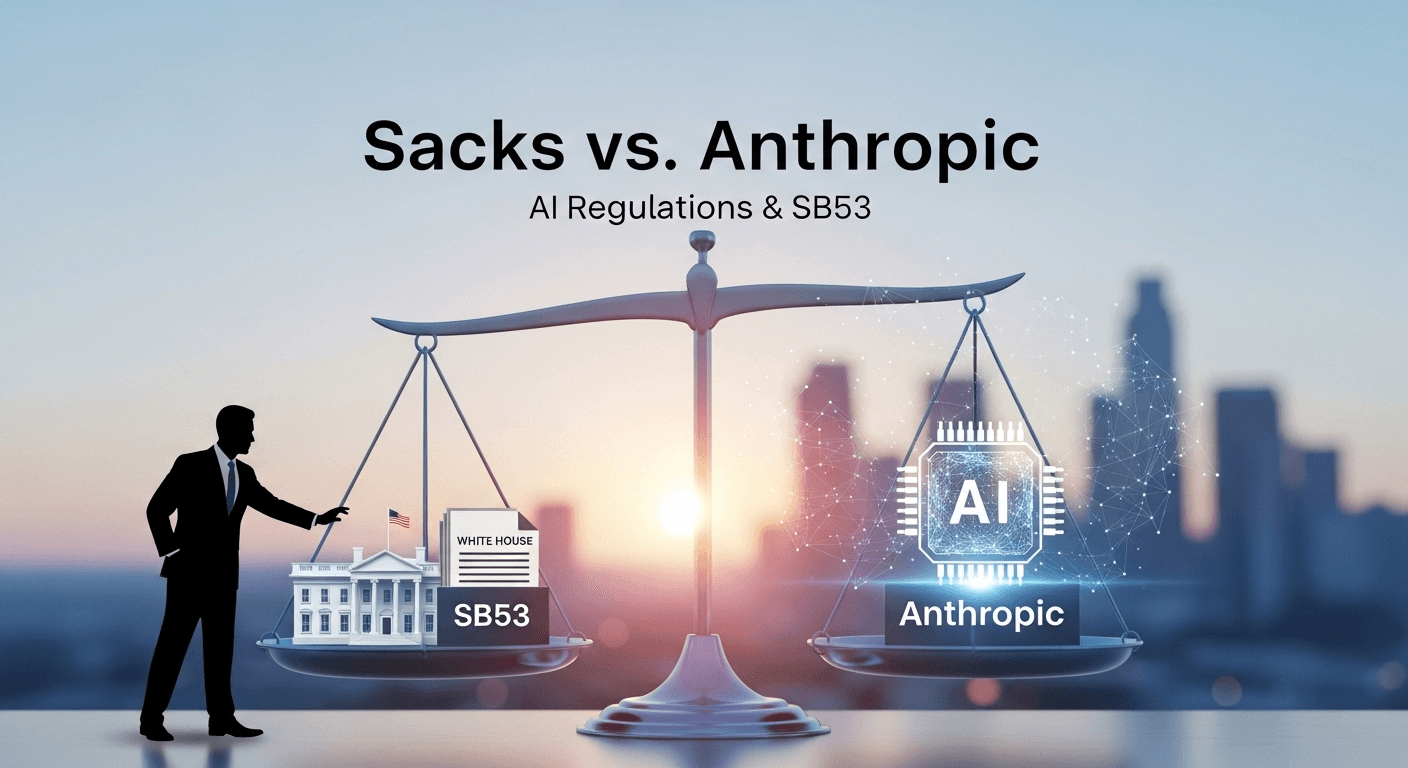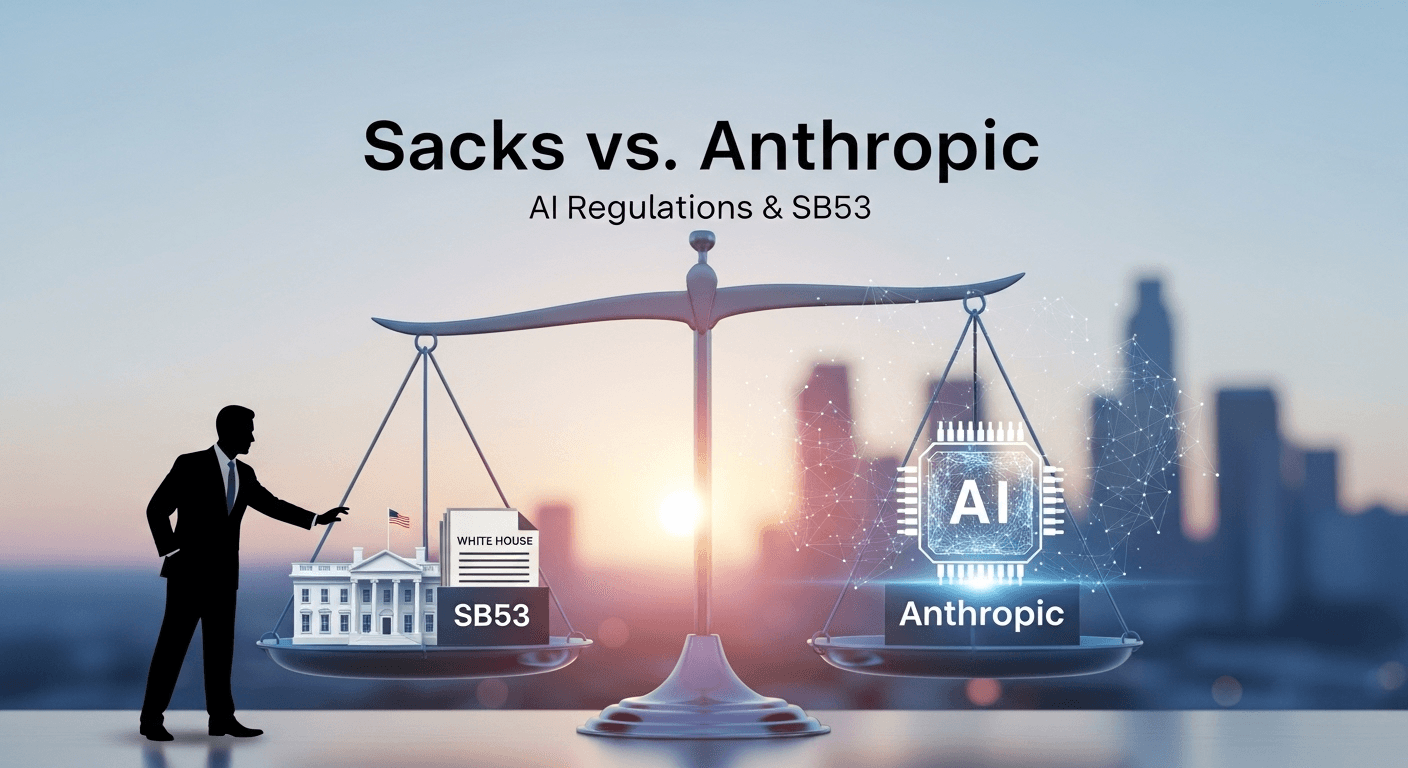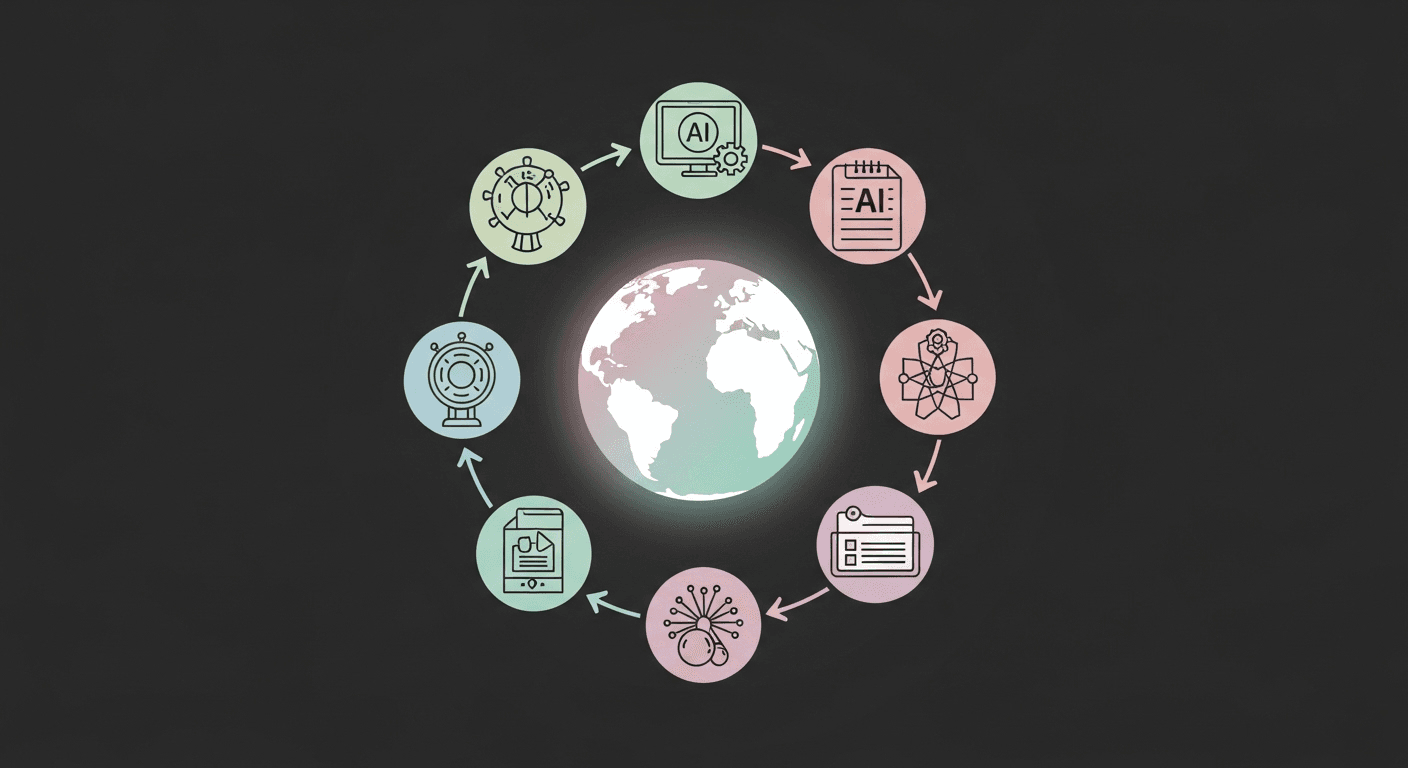Sacks vs. Anthropic: The High-Stakes Battle Over AI Regulations, Regulatory Capture, and California’s SB53

Introduction
A recent public dispute has thrust AI policy out of the technical nitty-gritty and into the headlines. David Sacks, the White House AI and crypto adviser, criticized Anthropic—the company behind the Claude AI model—accusing it of orchestrating a “sophisticated regulatory capture strategy based on fear-mongering.” In response, Anthropic’s policy chief, Jack Clark, deemed the accusation “perplexing,” highlighting the firm’s support for California’s new transparency law, SB53, as a proactive measure amidst sluggish federal action. But what’s really at stake, and why should founders, product leaders, and curious observers take note? This guide breaks down the key claims, the legislation at the heart of the controversy, and its implications for innovation, safety, and the startup ecosystem.
The Flashpoint in One Minute
- The Accusation: Sacks contends that Anthropic is instigating a detrimental “regulatory frenzy” at the state level—essentially, a case of a company steering rules to serve its own interests.
- The Rebuttal: Jack Clark from Anthropic countered that the criticism is confusing, emphasizing the company’s alignment with the administration on several issues and its commitment to engaging in a straightforward, fact-based discourse.
- The Policy Trigger: Anthropic has publicly backed California’s SB53, the first transparency law aimed at “frontier” AI developers, which was signed into law on September 29, 2025, and will phase in starting in 2026.
- The Deeper Divide: The White House has advocated for a unified national standard and previously supported a ten-year moratorium on state AI regulations, arguing that a fragmented approach stifles innovation. Anthropic argues that such a pause may be too blunt for rapidly evolving risks and is calling for actionable transparency rules now.
Who is David Sacks, and Why Does His View Matter?
David Sacks is a well-known Silicon Valley investor appointed as the White House AI and crypto czar. He plays a pivotal role in shaping federal AI policy and has become a prominent critic of overly stringent or inconsistent regulations. His appointment, announced in December 2024, placed him in a significant position to influence both high-level policy discussions and the overarching tone of the AI regulatory landscape. Lawmakers have taken a keen interest in the unique structure of his government role, where he is classified as a special government employee with a 130-day service limit.
What SB53 Actually Does
SB53, known as the “Transparency in Frontier Artificial Intelligence Act,” mandates disclosure and safety reporting for companies developing highly advanced AI systems. Key elements of the law include:
- Transparency: Large frontier developers must provide a publicly accessible framework detailing how national and international standards are incorporated into their AI safety programs.
- Safety Incident Reporting: Establishes a channel for reporting critical AI safety incidents to California authorities.
- Accountability: Introduces whistleblower protections and civil penalties for noncompliance.
- Innovation Support: Launches “CalCompute,” a consortium aimed at promoting safe, equitable access to computing resources for research and startups.
As reported by Reuters, SB53 specifically targets large developers in the AI arena and requires them to assess and disclose potential catastrophic risks, such as loss of control or misuse of technology for harmful purposes, with penalties for any violations. The law is set to take effect in 2026.
Anthropic’s Position and Support for SB53
While Anthropic expresses a preference for coherent federal regulations, it supported SB53 due to the slow pace of federal negotiations amid rapidly advancing AI capabilities. The firm believes that clear, workable transparency rules—with protections for startups—will create a fair playing field and help maintain safety practices during intense competition. Anthropic emphasizes the importance of disclosure over rigid technical mandates, acknowledging that regulatory thresholds may require periodic adjustments.
Jack Clark has further articulated a broader perspective in his writings and speeches: while we should be optimistic about AI’s potential, we must also introduce “appropriate fear” and tangible transparency to allow policymakers and the public to understand the intricacies involved. His recent essay, “Technological Optimism and Appropriate Fear,” provides context for the latest dispute.
The White House Side: Why Sacks Calls This Regulatory Capture
Sacks argues that Anthropic leverages the rhetoric of safety concerns to support rules that favor larger frontier labs while imposing burdens on smaller competitors, particularly through state-level requirements that might conflict with federal guidelines and hinder early-stage innovation. Media outlets like Axios and Bloomberg Law have reported on Sacks’ posts and the administration’s frustrations with state-by-state regulatory maneuvers.
The White House has typically endorsed federal preemption to prevent a fragmented state law landscape. Earlier in 2025, Sacks faced backlash for proposing a ten-year freeze on state AI regulations; Anthropic’s CEO Dario Amodei criticized the proposal as overly simplistic, advocating instead for a national transparency standard.
Does SB53 Really Help Big Labs and Hurt Startups?
The answer is nuanced. SB53 is designed to target the largest, highest-risk developers, providing safeguards like whistleblower protections and incident reporting requirements. However, the set thresholds are crucial: if they are too low, startups bear the burden; if too high, high-risk systems may go unchecked. Anthropic itself has pointed out that the current training-compute threshold of 10^26 FLOPS is merely a starting point and should adapt as technology evolves. While this suggests a thoughtful approach, it also leaves room for debate regarding where the lines should be drawn currently.
What About OpenAI and Other Labs?
OpenAI initially opposed an earlier California bill, SB1047, citing it as overly stringent but adopted a more conciliatory stance after SB53 was enacted. The organization acknowledged that the new law fosters a pathway for harmonizing state and federal oversight. This marks a notable shift from an all-or-nothing approach to a more collaborative outlook.
Meanwhile, the broader industry is also investing in safety measures like jailbreak defenses and improved interpretability, indicating that companies are preparing for increased scrutiny, regardless of jurisdiction.
A Quick Primer: What is Regulatory Capture?
Regulatory capture occurs when regulations end up catering to the interests of a narrow set of companies, rather than serving the public good. Ironically, Anthropic has voiced concerns over this risk in its own policy discussions, advocating for practical, enforceable regulations that do not inadvertently entrench existing market players. While this self-awareness does not resolve the current dispute, it frames the stakes: everyone claims to desire transparent and untainted regulations—the contention lies in determining who gets to define the terms.
How We Got Here: Federal vs. State Dynamics
- Federal Slowdown: Congress has yet to pass comprehensive AI legislation, prompting states to experiment with their own regulations.
- California’s Move: SB53 outlines transparency obligations that many companies have already been voluntarily reporting on, seeks to standardize incident reporting, and safeguards whistleblowers.
- Preemption Debate: The White House suggested a moratorium on state AI regulations for a decade, but critics argued that such a pause would stifle innovation precisely when new risks are acquiring speed.
- Current Mood: Even advocates for federal-first approaches are now discussing “harmonization” with state efforts like SB53, given the stagnation in Congress.
What Founders and Product Teams Should Watch
- Model Coverage: Keep an eye on whether the thresholds remain compute-based or if they expand to include revenue-based or capability-based triggers. SB53 starts with a training-compute threshold of 10^26 FLOPS, with the understanding that it should stay adjustable.
- Disclosure Templates and Audits: Anticipate more detailed expectations over time regarding safety reports, including testing methodologies, scope of red-teaming, and mitigations for national-security risks. Even without formal audits in SB53’s final draft, market pressure could lead to informal audits becoming the standard.
- Incident Reporting and Whistleblower Protections: Begin developing internal procedures now, as the explicit need for whistleblower protections and incident reporting channels in SB53 could lead to wider adoption elsewhere.
- Federal Harmonization: Observe Washington for a national transparency standard that could override or influence state regulations. Amodei’s proposal would enshrine disclosures that frontier labs already produce, transforming best practices into baseline standards.
- The Optics Game: Public narratives are crucial. Clark’s notion of “appropriate fear” is resonating in some policy discussions, while Sacks’ critique of “regulatory capture” finds traction in others. Ultimately, policy tends to align with the story that prevails.
Key Perspectives Compared
- The Sacks View: State-level regulations induce friction, encourage rent-seeking by established firms, and pose a risk to new entrants. A unified national standard is preferable to juggling fifty sets of rules.
- The Anthropic View: A decade-long wait for federal intervention is perilous; minimal, transparent disclosures with safeguards for startups can enhance safety without stifling innovation.
- The OpenAI Stance (Recent): SB53, in its current form, may facilitate cooperation between state and federal oversight—it’s far from perfect, but it offers a workable framework.
What This Dispute Reveals About AI Governance in 2025
Two core truths coexist:
– Large labs do have motivations to shape regulations. Concerns about regulatory capture are valid and should be actively addressed.
– The absence of regulations can entrench incumbents, as voluntary safety measures are costly and easily ignored during competitive races, while transparency mandates create common baselines that everyone must meet.
In summary, the essential question is not whether to implement regulations, but how to design rules that are clear, balanced, and adaptable as technological capabilities evolve.
Practical Takeaways
- For Startups: Assess whether your models or training runs approach SB53 thresholds. If not, you may be outside the direct scope, but partners and customers may still expect disclosures similar to those outlined in SB53. Start drafting lightweight safety documents early.
- For Enterprise Buyers: Request clear, comprehensible safety frameworks and red-teaming summaries from suppliers. Even if not immediately required by law, this practice reduces procurement risk.
- For Those Working on Frontier Models: Get ready for more structured transparency, including standardized system cards, evaluation descriptions, and incident response plans.
- For Policymakers: Think about incorporating capability-based triggers and adjustable thresholds, along with incentives for establishing independent evaluation frameworks.
The Big Picture
This debate extends beyond a single piece of legislation or one corporation. It is a critical test of the U.S.’s ability to formulate AI regulations that foster innovation while safeguarding public interest—without allowing any singular entity to dominate the narrative. California’s SB53 serves as an early attempt at achieving that balance in legislation. The White House aims to maintain its central role in Washington’s regulatory approach. The remainder of 2025 will reveal whether a compatible federal standard takes shape or if state-led transparency becomes the default everyone must eventually adhere to.
Frequently Asked Questions
1) What did Sacks actually say about Anthropic?
He claimed that Anthropic is “running a sophisticated regulatory capture strategy based on fear-mongering” and criticized the company for contributing to a state-level regulatory frenzy detrimental to startups. Media reports from Bloomberg Law and Axios have confirmed this exchange.
2) What does SB53 require from AI companies?
SB53 mandates that frontier AI developers publish safety frameworks, report critical incidents, and ensure whistleblower protections, with civil penalties for non-compliance. It also establishes a public compute consortium, CalCompute.
3) Did Anthropic really support SB53?
Yes. In September 2025, Anthropic publicly endorsed SB53, describing it as a pragmatic transparency-driven bill focused on larger developers while avoiding overly prescriptive mandates.
4) Where does the White House stand on state vs. federal rules?
The administration advocates for a national standard and previously supported a proposed ten-year moratorium on state AI legislation. Anthropic’s CEO suggested that such a freeze is too blunt and instead proposed a federal transparency standard.
5) Did OpenAI oppose California’s approach?
OpenAI initially opposed SB1047 in 2024 for being overly restrictive but later indicated that SB53 could serve as a bridge towards harmonizing state and federal oversight after its passage in 2025.
Conclusion
The clash between Sacks and Anthropic is more than just a social media spat—it represents a pivotal conversation about who gets to write the rules governing the AI landscape. If regulatory capture is a genuine concern, then transparency alongside adjustable thresholds may be the antidote. SB53 is a pioneering effort to find that balance. Whether Washington will adopt a compatible federal standard and whether the industry will engage sincerely in this process will ultimately determine if the U.S. can develop smarter, safer AI without sidelining the next wave of innovators.
Thank You for Reading this Blog and See You Soon! 🙏 👋
Let's connect 🚀
Latest Blogs
Read My Latest Blogs about AI

Sacks vs. Anthropic: The High-Stakes Battle Over AI Regulations, Regulatory Capture, and California’s SB53
White House adviser David Sacks accuses Anthropic of manipulating AI rules. We explore SB53, the regulatory capture debate, and its implications for startups and federal policy.
Read more


